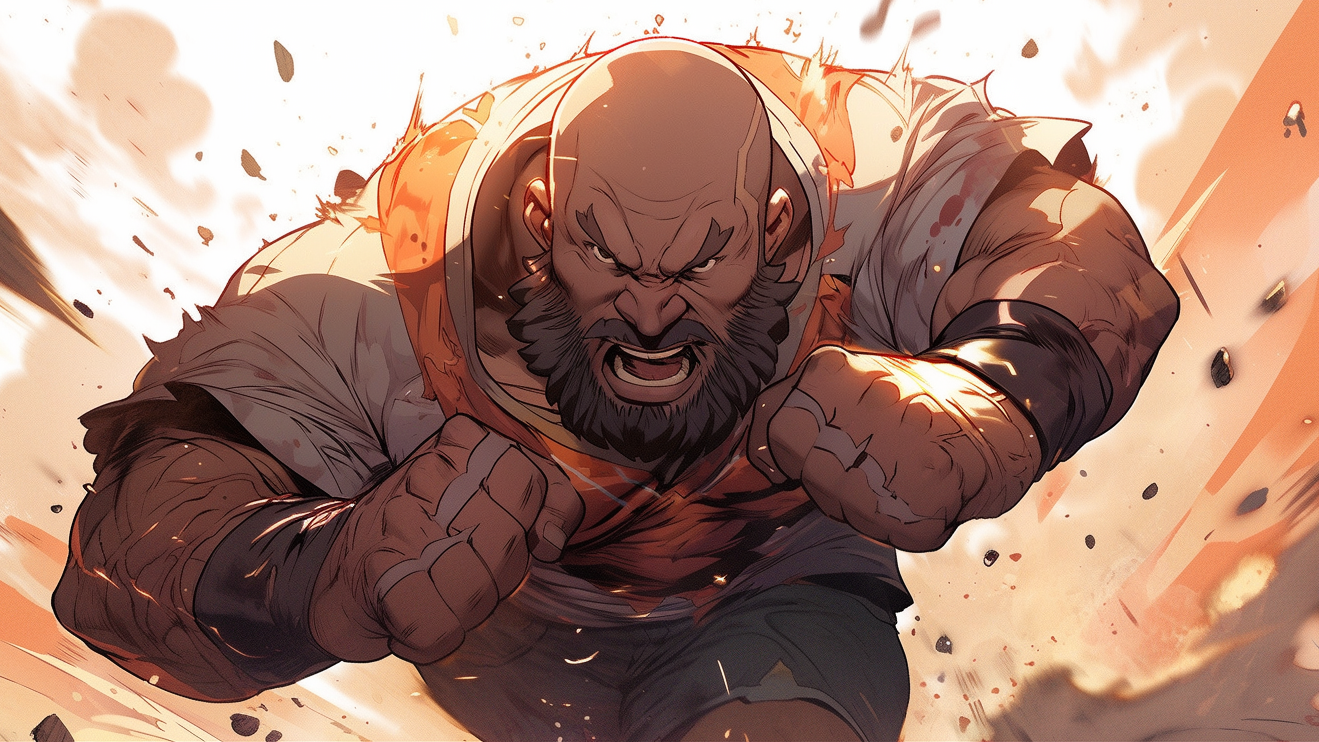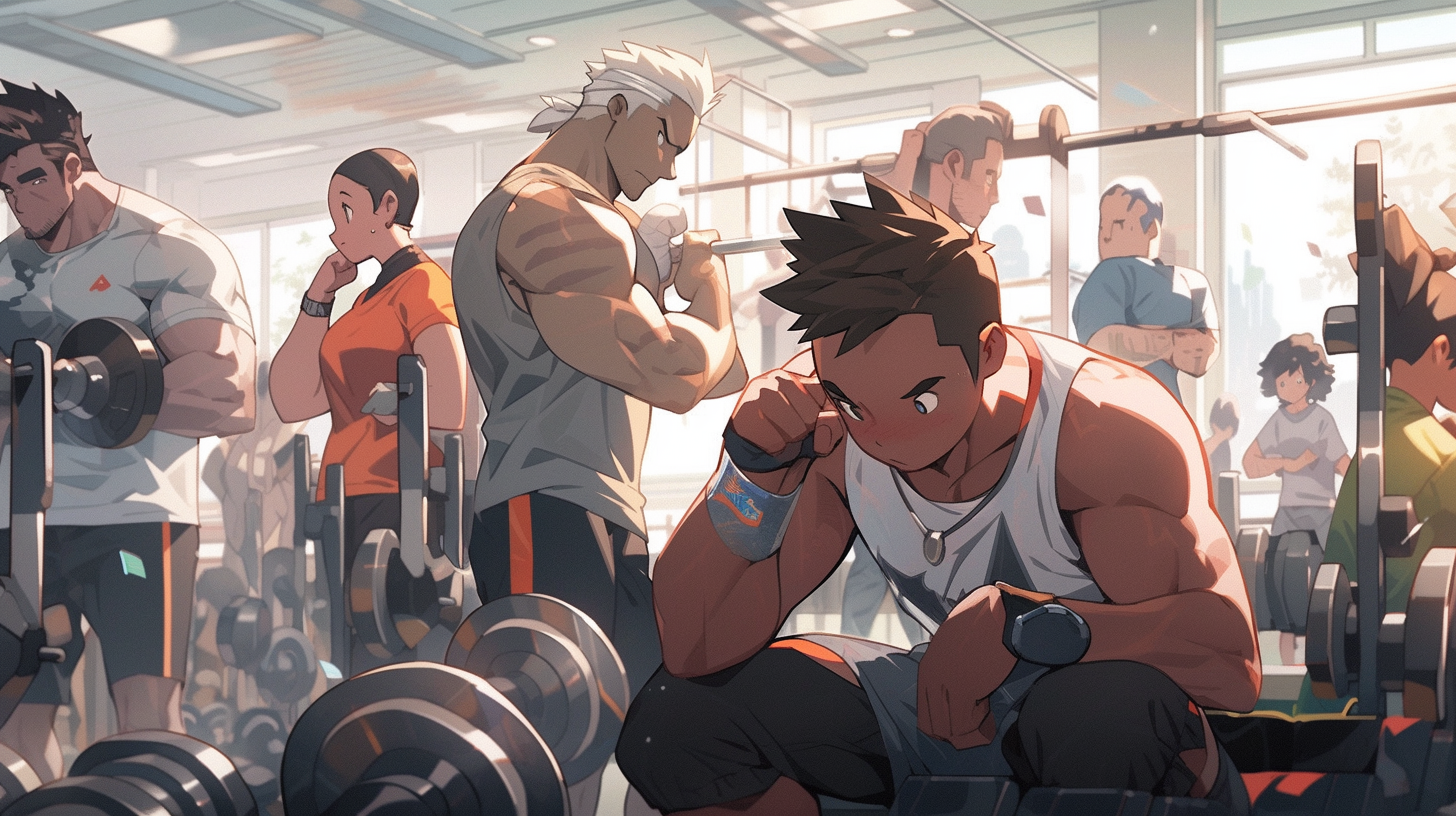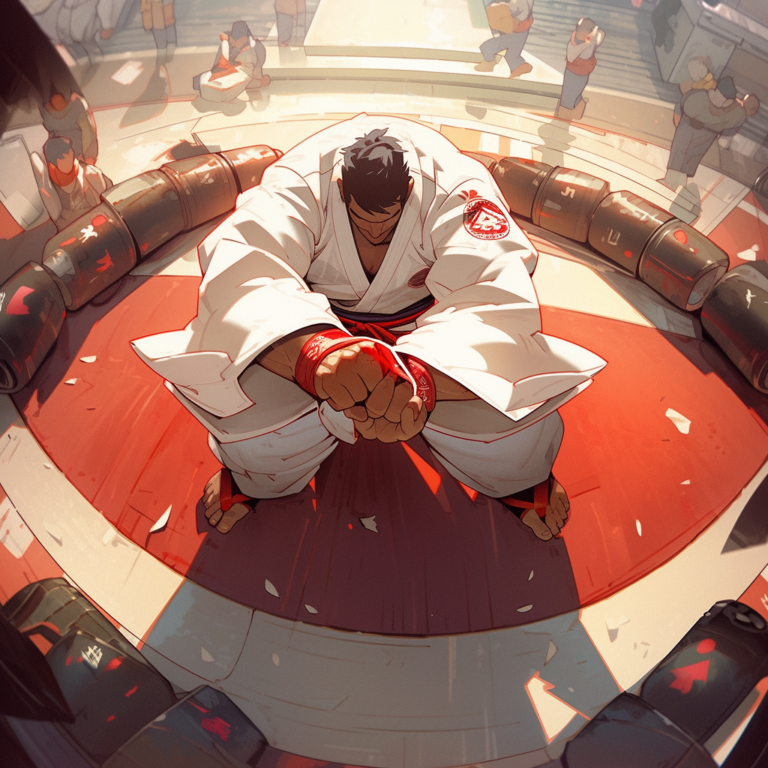The Ultimate BJJ Workout Plan: Building Strength and Conditioning
Discover the comprehensive guide to creating the ultimate workout plan for Brazilian Jiu-Jitsu (BJJ) practitioners. This article provides insights into developing effective exercises, improving strength and conditioning, and enhancing overall performance on the mat. Whether you’re a beginner or advanced practitioner, learn how to optimize your training regimen and elevate your BJJ game to the next level.
Key Takeaways:
- Strength training is crucial for BJJ athletes as it provides numerous benefits, such as increased power, improved endurance, and reduced risk of injury.
- Exercises like deadlifts, squats, bench press, and rows are highly recommended for building strength in BJJ. These compound exercises target multiple muscle groups and enhance overall performance.
- Tempo work, including eccentric overload training and isometric overload training, helps improve strength and range of motion, allowing BJJ fighters to execute techniques more effectively.
- Grip strength is essential in BJJ, and exercises like dead hangs and farmers holds can help develop a strong grip, enhancing control and submission skills.
- Training for power and speed through plyometric drills, ballistic movements, and incorporating Olympic lifts can improve explosiveness and agility, giving BJJ fighters a competitive edge.
Understanding the Importance of Strength Training for BJJ

Understanding the importance of strength training in BJJ goes beyond physical power – it enhances performance, reduces the risk of injury, and improves overall grappling skills. Delving into the benefits of strength training for BJJ and its role in developing resilient athletes, we’ll explore the impact of targeted exercises on BJJ practitioners. By incorporating strength training into their workout plan, fighters can elevate their abilities on the mat and gain a competitive edge.
Benefits of Strength Training for BJJ
Strength training is paramount for BJJ (Brazilian Jiu Jitsu) athletes. It offers 3 main benefits: increased muscular strength, greater endurance, and more power. Plus, it helps prevent injuries by strengthening the stabilizing muscles and improving joint stability. It also helps maintain optimal body composition, which boosts performance and facilitates weight management.
Role of Strength Training in bjj workout plan
By doing regular strength exercises, they can improve physical capabilities and be more effective in grappling. Force production is increased, allowing for better takedowns and defenses. Muscular endurance is also developed, helping them maintain performance over long matches and training sessions.
Injury prevention is another advantage of strength training. Building a strong base stabilizes joints, protecting against strains or sprains. Muscles surrounding vulnerable areas like shoulders and knees are strengthened, reducing the risk of common injuries.
Exercises like deadlifts, squats, bench press, and rows are useful for targeting muscle groups used in grappling. Focusing on compound movements can help BJJ athletes improve performance.
For best results, BJJ athletes should work with a qualified strength and conditioning coach. This ensures their program is tailored to their needs, so they can target the right muscle groups and make the most of their training.
The Benefits of Strength and Power Workouts for BJJ Fighters
Strength and power workouts offer BJJ fighters numerous advantages. They focus on building strength, explosiveness, and power – all key for success in Brazilian Jiu-Jitsu.
- Physical Strength: Strength and power workouts help BJJ fighters build overall physical strength. This translates to better takedowns, submissions, and grappling techniques.
- Explosiveness: Explosive movements in BJJ require precision and efficiency. Strength and power workouts increase explosiveness – enabling fighters to move swiftly.
- Power: Power is crucial in BJJ, giving fighters control over their opponents. Strength and power workouts develop greater power for strikes, throws, and submissions.
- Endurance: Strength and power workouts, combined with cardiovascular training, aid improved endurance. This enables fighters to maintain a high level of performance throughout a match.
- Injury Reduction: Increased strength and power help stabilize the body, reducing the risk of common BJJ injuries. A stronger body can withstand the physical demands of the sport.
- Confidence Boost: Strength and power workouts not only improve physical abilities but also mental confidence. Knowing they can execute techniques effectively gives BJJ fighters the confidence to face any opponent.
Strength and power workouts are an essential part of a well-rounded BJJ workout plan. They complement technical training, conditioning, and flexibility exercises – giving fighters a comprehensive physical preparation. Incorporating these workouts into their routine helps BJJ fighters enhance their performance and gain a competitive edge.

Recommended Exercises for Building Strength: bjj workout plan
Build strength for Brazilian Jiu-Jitsu (BJJ) with these recommended exercises. We’ll cover the key exercises you should focus on: Deadlifts, Squats, Bench Press, and Rows. These exercises have been proven to enhance your BJJ performance by improving core strength, lower body power, upper body endurance, and overall muscle development. Gear up and get ready to amplify your skills on the mat with these essential workouts.
Deadlifts
Deadlifts are great for building strength and power, especially in the lower body muscles like the glutes, hamstrings, and quads. They also work the core muscles, which is great for stability during grappling. Plus, they increase grip strength, which is a must for controlling opponents and executing BJJ techniques.
Deadlifts improve posture and body mechanics, helping prevent injuries during training and competition. They also help with explosive power, so athletes can generate quick bursts of force for takedowns and transitions.
- Deadlifts are an essential part of any BJJ strength training program.
- Proper form is key to get the most out of deadlifts.
- Varying sets, reps, and loads keeps progress going.
- Warm up before performing deadlifts.
- A professional can help design an individualized program.
Deadlifts are important for BJJ athletes. Understanding how to use them properly will improve physical abilities, performance, and reduce injury risk.
Squats
Squats target key muscles in the lower body such as the quadriceps, hamstrings, and glutes. This exercise bolsters leg strength for movements like shooting for takedowns and escaping from different positions. Squatting also helps with stability, balance, and engaging core muscles and smaller stabilizer muscles in the hips and ankles. For BJJ athletes, squats can enhance explosiveness and speed when executing techniques on the mat. Plus, it promotes better mobility and flexibility in the hips and knees, allowing for smoother transitions between positions and submissions. Additionally, regular squatting strengthens muscles surrounding the knee joint, which can prevent injury.
That’s not all! Squats also increase bone density. Stress on bones of the lower body encourages them to become stronger and more resilient. This is especially beneficial for those who do a lot of physical activity.
To maximize the benefits of squats when training for BJJ, follow these tips:
- Perform squats with proper form and technique.
- Mix up your squat variations, like front squats or single-leg squats.
- Gradually increase weight/resistance.
- Implement different rep ranges (high and low reps).
By following this bjj workout plan, BJJ athletes can improve their lower body strength, power, stability, and injury prevention – ultimately enhancing their performance on the mat.
Bench Press
The Bench press has great benefits for BJJ athletes. It helps to develop upper body strength, which is vital for executing moves and techniques. It also increases pushing power so athletes can control their opponents and create space during matches. Plus, it engages multiple muscle groups, enhancing overall muscular endurance needed for grappling. And, it enhances shoulder stability and joint health by fortifying the surrounding muscles.
It’s worth noting that bench press not only adds to upper body strength, but also increases overall muscular endurance. This is super important for long sparring sessions or tournaments that need extended effort.
To do it, you lie down on a flat bench, keep your feet firmly on the floor, and grip a barbell with an overhand grip. Then lower the bar to touch your chest before pushing it back up.
Rows
Rows can be incorporated into a strength training program for BJJ. Three variations include dumbbell, barbell and seated cable rows. Each targets slightly different muscle groups in the upper back. With rows, many muscle groups, including the core and lower body, are engaged to improve balance and body control for improved performance in BJJ.
Rows can lead to significant gains in upper body strength and muscular endurance. Incorporating them into a comprehensive program can enhance performance by improving strength, posture and control.
bjj workout plan: Tempo Work for Improved Strength & Range of Motion
Tempo work in your BJJ workout plan can be a game-changer when it comes to improving strength and range of motion. In this section, we will explore the benefits of eccentric overload training and isometric overload training. These training techniques will help you reach new levels of performance on the mat, enhancing your movements and overall effectiveness in Brazilian Jiu-Jitsu. Prepare to take your training to the next level with these innovative approaches.
Eccentric Overload Training
Eccentric Overload Training puts emphasis on the eccentric phase of a movement. When the muscle lengthens under tension, it allows for greater force production, resulting in more muscle activation and growth.
This type of training is beneficial for BJJ athletes as it targets specific muscle groups used in grappling and ground fighting. Hence, they can generate explosive power and develop stronger muscles needed for techniques like chokes or guard passes.
Exercises such as controlled descents, negative reps, or using resistance bands can help with eccentric overload training. It also promotes muscular endurance, joint stability, and injury prevention.
For BJJ athletes, it is best to begin with lighter loads or resistance bands and increase the load gradually. Additionally, combining Eccentric Overload Training with other training methods can further enhance power and overall performance. Proper form must be maintained throughout each exercise to get optimal results and avoid potential injuries.
Isometric Overload Training
Isometric holds are a great way to enhance BJJ performance. Athletes can do this by assuming a position and holding it for a set duration. Partner-resisted holds are a more intense variation of this exercise. To progress, gradually increase the time or intensity of the holds.
Incorporating isometric overload training into a BJJ strength program can be done by targeting relevant muscle groups and doing isometric contractions during those exercises. This type of training should be done in combination with other forms of strength and conditioning exercises.
A qualified strength and conditioning coach can design an individualized program for athletes. With proper technique and gradual progression, athletes can gain strength and muscular endurance. This leads to improved BJJ performance.
Don’t miss out on these benefits!
Developing Grip Strength for BJJ
Developing a strong grip is crucial for any bjj workout plan. As a Jiu-Jitsu practitioners.exercises that can help improve grip strength are important.
HERE ARE A FEW WORKOUTS THAT WILL HELP DEVELOP YOUR GRIP STRENGTH
Dead Hangs
Dead Hangs engage multiple muscle groups (hands, forearms, biceps, shoulders). They improve grip strength for controlling opponents and shoulder stability for executing techniques. Plus, they enhance muscular endurance, so you can maintain grips for longer periods. You can modify Dead Hangs to target specific areas by using different grip positions or adding weights. They also serve as a functional exercise to simulate movements from BJJ.
For extra challenge, variations such as weighted hangs or one-arm hangs can be incorporated. This helps build greater grip strength and upper body stability. Dead Hangs are an invaluable addition to any bjj workout plan/ strength training program for BJJ practitioners.
Pro Tip: Maintain proper form for maximum benefits. Keep your shoulders down and engage your core muscles to support your body weight. Gradually increase the duration of each hang over time to gradually build up your grip strength.
Farmers Holds
To understand the benefits of Farmers Holds for BJJ athletes, let’s consider some key details. Grip strength is highly important in BJJ training. Weak grip can make it difficult to secure submissions, control an opponent, and defend against attacks. By incorporating Farmers Holds into their training routine, BJJ athletes can strengthen their grip muscles and improve their ability to apply force and control.
Furthermore, Farmers Holds offer other advantages. They engage muscles in the hands, forearms, biceps, triceps, shoulders, and core, improving overall upper body strength and stability. This can improve performance in various aspects of BJJ such as takedowns, clinching, and dominant positions.
Regular Farmers Holds can help bjj workout plan by developing resilience your grips and perform better on the mats. This exercise provides a functional and practical way to build specific muscles used in BJJ while enhancing overall performance.
Training for Power and Speed in BJJ
Training for power and speed in BJJ requires a strategic approach. In this section, we will uncover the secrets to improving your performance on the mats. From understanding the strength-speed curve to incorporating plyometric drills for elastic recoil and ballistic movements, we’ll explore the effective techniques that can take your BJJ skills to the next level. Get ready to unleash your full potential and dominate your opponents with explosive power and lightning-fast speed.
Strength-Speed Curve
The Strength-Speed Curve is key in BJJ athletes’ training. This curve is the relationship between strength and speed during activities, especially in Brazilian Jiu-Jitsu. To get the best results, understanding this curve is essential.
- As strength rises, so does speed.
- By training at different intensities along the curve, certain adaptations can be achieved.
- Max strength training can help with explosive power.
- Training at higher speeds can boost agility and quickness.
- To optimize performance, the right balance between strength and speed training must be found.
- The Strength-Speed Curve helps to structure training programs to target areas that need improvement.
It’s important to use exercises that target both strength and speed, as this will lead to better development. By adjusting variables such as load, repetition, and tempo, BJJ athletes can get different physiological responses to improve their performance.
Knowing the Strength-Speed Curve well lets individuals customize their training programs for their needs and goals. By recognizing areas that need to be improved, athletes can use targeted exercises and training methods to work on these weaknesses. This guarantees that all aspects of an athlete’s physical abilities are optimized for success in Brazilian Jiu-Jitsu.
To take full advantage of the Strength-Speed Curve in BJJ training, it’s suggested to include exercises that focus on both maximum strength and high-speed. Examples of such activities are deadlifts, squats, bench presses, rows, plyometric drills, ballistic movements, and Olympic lifts.
Including these exercises in an organized program can help BJJ athletes in their performance, power, explosiveness, agility, and quickness, so they have an edge in the sport. Moreover, by strategically manipulating training variables such as intensity, volume, and rest periods, individuals can further maximize the benefits of the Strength-Speed Curve and reach their desired outcomes in Brazilian Jiu-Jitsu.
Plyometric Drills for Elastic Recoil: bjj workout plan
Plyometric drills for elastic recoil are a must for BJJ athletes! These exercises focus on speedy movements that boost the body’s ability to produce force and power with ease. By merging quick muscle contractions with minimal contact with the ground, plyometric drills improve elastic energy storage and release, helping practitioners to execute mighty movements more competently.
- High-intensity jumps: Box jumps and depth jumps, part of plyometric drills, help build better lower body explosiveness and reactive strength. These involve jumping on or off platforms of varying heights, making the muscles generate maximal force in a hurry.
- Medicine ball throws: Explosive throwing motions with medicine balls like overhead slams or rotational throws, upgrade upper body power and rotational strength. These drills imitate the dynamic movements in techniques like takedowns and submissions in BJJ.
- Hurdle hops: Hurdle jumps, over obstacles of various heights, boost lower body power and coordination. This drill helps develop explosive hip extension and knee drive, important for movements like guard passing or scrambling in BJJ.
To get the most out of plyometric drills for elastic recoil, it’s essential to do them well, plus considering one’s fitness level and technique proficiency. A proper warm-up, progression, and gradually rising intensity are key to preventing injuries. Including these high-impact exercises into an all-inclusive strength training program can significantly enhance an athlete’s performance on the mat. So get ready to skyrocket into BJJ brilliance with ballistic and dynamic explosive movements!
Ballistic Movements: bjj workout plan
A table can be used to show different ballistic movements that are beneficial for BJJ athletes. It would include columns for the name of the exercise and a brief description of its benefits. Here’s an example:
| Ballistic Movement | Benefits for BJJ |
|---|---|
| Medicine Ball Throws | Explosive power |
| Kettlebell Swings | Hip explosiveness |
| Plyometric Push-ups | Upper body power |
| Box Jumps | Lower body strength |
Plus, there are more ballistic movements for BJJ athletes. Such as jumping lunges, medicine ball slams and clap push-ups. These exercises boost dynamic strength, speed and agility for BJJ.
To excel in Brazilian Jiu-Jitsu, ballistic movements should be part of your strength training. They not only grow power but also neuromuscular coordination and athleticism. Don’t miss the chance to make your BJJ skills better by adding these powerful movements to your routine!
Incorporating Olympic Lifts for Speed and Strength Improvement
Incorporating Olympic Lifts into your BJJ workout plan is a great way to enhance speed and strength. These lifts are from Olympic weightlifting and come with a range of benefits. To make the most of them, follow this 6-step guide:
- Learn proper technique with help from a qualified coach or trainer.
- Begin with lighter weights and gradually increase.
- Focus on compound movements like the snatch and clean and jerk.
- Train explosiveness and power to improve speed and agility.
- Supplement with assistance exercises like lunges and squats.
- Prioritize recovery with sleep, nutrition, and active recovery techniques.
Remember when following any bjj workout plan make sure to progress incrementally, with consistency and dedication. This will yield improvements in speed, strength, and overall performance.
Working at the Correct Level of Intensity
Working at the right intensity is key when following a BJJ workout plan. It helps you challenge yourself, while avoiding injuries and burnout.
- First, assess your current fitness level. This includes evaluating your strength, endurance, and flexibility. Then, build a program that targets areas for improvement.
- Gradually, increase intensity over time. Do this by adding more reps, increasing weight or resistance, or decreasing rest time between sets. Don’t progress too fast or it could lead to overexertion and injuries.
- Include HIIT in your BJJ plan. This means alternating intense exercise and short recovery periods. HIIT improves cardiovascular fitness and simulates a real BJJ match.
- Prioritize form and technique. It’s better to do exercises correctly at a lower intensity than to sacrifice form for a higher intensity workout. This reduces the risk of injury and makes sure you are targeting the right muscles.
Remember, fitness levels and goals vary. Consult a fitness professional or BJJ instructor to make a plan that fits your needs. Working at the correct intensity can boost your BJJ performance and reach your fitness goals.
Sample Strength Training Programs for BJJ
Strength training is a must for BJJ practitioners to improve their mat performance. To make good sample strength training programs for BJJ, focus on areas that directly contribute to BJJ techniques and movements. Here are three key points:
- Multi-joint exercises: Deadlifts, squats, and kettlebell swings target multiple muscle groups & joints together. These compound movements help build overall strength & power, just like BJJ’s grappling and ground fighting.
- Core & grip strength: BJJ requires core stability and grip strength. Exercises like planks, Russian twists, and pull-ups can help build these. That way, you can stay in control and apply submissions effectively.
- Cardiovascular endurance: BJJ matches can be physically demanding. Include HIIT exercises like sprints, burpees, and rowing to improve endurance and match the intensity of a BJJ match.
Also, include mobility exercises and stretching to improve flexibility and avoid injuries. An effective strength training program should address strength, endurance, and mobility to enhance overall performance on the mat.
Balancing Strength Training with BJJ Training
Strength training is a must for a balanced BJJ workout plan. It increases physical strength, power, and stamina – all needed for Brazilian Jiu-Jitsu success. Through strength training, you can boost your ability to perform BJJ techniques and lessen the risk of injuries.
Apart from physical gains, it also has mental perks. It builds resilience, discipline, and focus – all great for the demanding sport of BJJ. Through consistent strength training, you develop a strong mindset that helps you stay tough on and off the mat.
To get the most out of strength training, design a plan that targets muscle groups used in BJJ movements. Do exercises like squats, deadlifts, bench presses, and pull-ups. Kettlebell swings and medicine ball exercises can help with explosive power and core strength.
Also consider the frequency and timing of your workouts. Do push too hard on you bjj workout plan. Let your muscles rest and repair after strength training. And, alternate between different exercises to prevent plateauing and keep your workouts effective.
Don’t miss out on the chance to improve your BJJ performance with strength training. Balance it with BJJ training to maximize your physical and mental potential, leading to better performance and success on the mat. Take action now and start enjoying the benefits of a balanced training plan.
Flexibility and Mobility Work for BJJ
Flexibility and mobility are key to Brazilian Jiu-Jitsu (BJJ) training. Practitioners must be able to move freely and accurately on the ground. To achieve this, specific exercises and stretches are done to boost performance and prevent injuries.
Dynamic stretching and yoga poses are essential for BJJ. They help make muscles elastic and increase joint range of motion. It allows for a wider range of movements and smoother BJJ techniques. Exercises must be part of the training program.
Mobility work focuses on improving functional movement patterns of the body. Exercises target areas like the hips, shoulders, and spine. This increases stability and flexibility, making techniques easier and less straining. Mobility work is essential for BJJ.
It’s important to note that flexibility and mobility work should be tailored for each practitioner. Factors such as age and body type can influence the areas that need attention. So, consulting a qualified coach or trainer for a personalized plan is recommended.
The Role of Conditioning in a bjj workout plan
Conditioning is key in BJJ. It helps athletes boost their physical abilities and endurance – essential for success. This includes strength, flexibility, cardiovascular fitness, and agility. Through a strategic workout plan, these can all be improved.
Aerobic and anaerobic conditioning are both important. Aerobic is needed for stamina and long matches, while anaerobic aids explosive movements. A balanced plan is key for optimum performance.
Conditioning also reduces risk of injury. Repetitive training and competition can lead to muscular imbalances and weaknesses. A conditioning plan strengthens muscles used in BJJ and increases flexibility. It also enhances mental resilience and focus.
To incorporate conditioning into BJJ, aerobic activities like running or swimming can be used. Strength training exercises like weightlifting or bodyweight exercises build muscular power. Also, BJJ drills and sparring sessions can be used to simulate real-life grappling.
Injury Prevention and Proper Warm-up
Injury prevention and warm-up are crucial for any bjj workout plan. To stay safe and get the most out of training, take the right measures.
Prepare the body. Before BJJ, warm up with dynamic stretching. This increases blood flow and flexibility, reducing injury risk.
Activate the core. Core muscles are key for BJJ movements. Exercises that target them help stabilize and improve performance.
Focus on mobility. BJJ requires a wide range of motion in joints. Mobility exercises can improve flexibility and joint function, reducing strains and sprains.
Gradually increase intensity. Warm-up should mimic BJJ movements and demands. This prepares the body and prevents sudden stress.
Address weaknesses. Pay attention to individual areas of vulnerability. Exercises that target these can help prevent injury and improve performance.
Remember, injury prevention and warm-up are ongoing processes. Be aware of limitations, listen to your body, and adjust the routine. By prioritizing safety and warm-up, athletes can enhance performance and reduce injury risk.
Planning and Progressing a bjj workout plan for strength & Conditioning Program
Careful consideration and strategic implementation of exercises and techniques are key when planning and progressing a BJJ strength and conditioning program. Creating a well-structured plan that targets specific areas and promotes overall fitness is essential. Refer to reference data for valuable insights into developing an effective program.
- Assess individual needs and goals. Thoroughly evaluate current fitness level, strengths, weaknesses and areas needing improvement. Understand individual requirements to tailor the program. Address flexibility, endurance, strength and explosiveness.
- Design comprehensive workout plan. Focus on muscle groups used in BJJ. Incorporate functional movements, enhance cardiovascular endurance, improve flexibility and increase strength. Program should be periodized, gradually increasing intensity and volume to avoid plateauing and maximize progress.
- Measure progress and adjust program. Track progress through metrics such as strength gains, endurance improvements, flexibility and body composition. Analyze data and make adjustments if needed. Modify exercises, increase weights/reps or introduce new challenges.
Remember additional factors such as nutrition, rest and recovery, and injury prevention. These aspects contribute to the program’s success and effectiveness. Integrate a well-planned and progressive strength and conditioning routine to enhance performance, reduce risk of injury and take skills to new heights.
The Importance of Balance and Variation in Training
Balance and variation in training are important for good results in any fitness program. A mix of different exercises and techniques can improve performance and reduce the risk of injuries. The BJJ workout plan emphasizes the significance of balance and variation with its range of movements and drills.
Balance means distributing training across different muscle groups and movement patterns. The BJJ workout plan works on core, upper body, lower body, and cardiovascular system. This balanced way ensures no muscle group is overworked or missed out, resulting in better strength, endurance, and flexibility.
Variation involves different exercises and training methods to stop plateaus and boredom. The BJJ workout plan includes exercises such as grappling, striking, and conditioning drills, to keep body and mind busy. By testing oneself with new movements and techniques, people can keep progressing and reach their potential.
It is worth noting that balance and variation not only improve physical fitness but also help in preventing injuries. By doing a wide range of movements and techniques, people can make different muscle groups and increase their overall stability. This reduces the risk of overuse injuries and imbalances that can happen when focusing on some exercises or movements.
Specific Aspects of bjj workout plan to Consider
BJJ Training needs several points to be thought about for the best results. These details are essential for arranging a proper workout plan and ensuring comprehensive training. Here are six key points to consider:
- Warm-up & stretching: Do a warm-up routine incl. dynamic stretches before starting training. This helps to prevent injuries and get the body ready for the intensity of the workout.
- Technique drills: BJJ is a skill-based martial art, so it is important to practice and refine various techniques. Including technique drills in training helps build muscle memory and enhance overall performance.
- Live sparring: To simulate real-life situations, engage in live sparring sessions. This allows you to apply your learned techniques in a dynamic and unpredictable environment, improving your adaptability and decision-making skills.
- Strength & conditioning: BJJ needs a high level of physical fitness. Add strength and conditioning exercises to the training plan to enhance overall strength, endurance, and mobility. This is crucial for successful performance on the mat.
- Mental training: BJJ is not only physical, but also mental. Mental training techniques, such as visualization & mindfulness exercises, can help with focus, concentration, and mental resilience. This is important for maintaining composure during intense matches.
- Injury prevention & recovery: Given the physical nature of BJJ, prioritize injury prevention & recovery. This includes proper rest, nutrition, & exercises that strengthen muscles & joints to reduce the risk of injuries.
Lastly, remember to adapt the training plan to individual needs & goals. Each practitioner may have unique requirements, strengths, & weaknesses. All of this should be taken into account for a well-rounded & effective training regimen.
Muscle Groups Used in BJJ and Targeted Exercises
A bjj workout plan involves lots of muscle groups. Knowing which muscles and exercises to target is key for BJJ athletes who want to improve. Focusing on certain muscle groups boosts overall strength, endurance, and grappling skills.
- Core muscles are important in BJJ. Exercises like planks, Russian twists, and hanging leg raises help strengthen them.
- Upper body muscles, such as shoulders, chest, back, and arms, are used in BJJ techniques. Push-ups, pull-ups, rows, and shoulder presses are good exercises for these.
- Lower body muscles provide stability, balance, and explosive power. Squats, lunges, deadlifts, and calf raises build strength.
- Grip and forearm muscles are important for holds and submissions. Grip strength can be built with farmer’s carries, wrist curls, and towel pull-ups.
- Flexibility and cardiovascular fitness are also necessary for BJJ. Regular stretching and cardio exercises like running, cycling, and interval training help performance.
Remember, mobility, agility, and mental discipline are also essential to BJJ. Exercises targeting these will further improve performance. Strengthening these muscles will equip BJJ athletes with the physical capabilities they need to succeed.
Beginner bjj workout plan for Strength & Conditioning Program to Develop Movement Patterns and Endurance
A beginner Brazilian Jiu-Jitsu (BJJ) strength and conditioning program is designed to develop movement and endurance. It focuses on building strength, agility, and stamina to enhance BJJ performance. By using specific exercises and training routines, individuals can improve their movement patterns. This enables them to execute techniques more efficiently.
The program also aims to build endurance, helping practitioners sustain high-intensity efforts during matches or sessions. With a structured and comprehensive approach, beginners can optimize their performance and enhance physical capabilities.
Strength Training: Exercises such as squats, deadlifts, and pull-ups can build overall strength to effectively execute BJJ techniques.
Agility and Coordination: Drills and exercises to enhance agility, footwork, and body control can improve movement patterns for BJJ.
Cardiovascular Endurance: HIIT or other cardiovascular exercises can help increase endurance, supporting performance during matches or sessions.
Flexibility and Mobility: Stretching and mobility exercises can increase joint range of motion, aiding practitioners to move with more ease.
Core Strength: Exercises like planks and stability can build a strong core and balance, for better performance.
Mental Focus: Visualization and mindfulness can enhance concentration and mental resilience on the mat.

Additionally, make sure as a beginner you pay attention to getting proper nutrition, hydration, and rest to support their development and recovery. Don’t forget to incorporate protocols for these in your bjj workout plan.
While strength and conditioning are essential for BJJ, it is important to remember the need for technical skill development and regular mat time. Hence, beginners should dedicate sufficient time to learning and practicing BJJ techniques from qualified instructors.
Some Facts About BJJ Workout Plans:
- ✅ Strength and power training is important for BJJ fighters to improve their performance. Studies have shown that athletes who back squat and bench press 130% of their body weight have a competitive advantage. (Source: TrainHeroic)
- ✅ Full body training sessions, done twice a week, are effective for building strength in BJJ athletes. Exercises such as deadlifts, squats, bench press, and rows are recommended for developing strength. (Source: TrainHeroic)
- ✅ Tempo work, including eccentric overload training and isometric overload training, can improve strength and range of motion for BJJ athletes. Grip strength is important and exercises like dead hangs and farmers holds can be beneficial. (Source: TrainHeroic)
- ✅ To develop power and speed, it is important to train at the speed end of the strength-speed curve. Plyometric drills with a contact time of fewer than 250 milliseconds and ballistic movements are effective for BJJ athletes. (Source: TrainHeroic)
- ✅ A well-designed strength training program for BJJ should include exercises such as squats, deadlifts, bench press, barbell rows, pull-ups, and overhead press. Core work and conditioning should also be included. (Source: Character Strength)
FAQs about Bjj Workout Plan
Question 1: What are the specific features of a BJJ workout plan?
Answer: A BJJ workout plan should focus on developing maximal strength, aerobic conditioning, explosive power, and specific conditioning for BJJ. It should address the muscles used in BJJ, including the upper body, lower body, and core. The exercises should be tailored to improve flexibility, mobility, stability, grip and upper body strength, lower body strength and power, and anaerobic and aerobic conditioning.
Question 2: How can strength and conditioning training help my bjj workout plan at the highest levels of competition?
Answer: Strength and conditioning training can give BJJ athletes a competitive advantage at the highest levels of competition. It can improve overall performance by enhancing strength, power, endurance, and muscular control. Additionally, it can help prevent injuries and improve flexibility and mobility, allowing athletes to execute submission attempts and reversals more effectively.
Question 3: Can a BJJ workout plan help a smaller BJJ athlete defeat a bigger rival?
Answer: Yes, a well-designed BJJ workout plan can help a smaller BJJ athlete overcome the size disadvantage when facing a bigger rival. By focusing on specific strength exercises, grip strength, explosive power, and technique, a smaller BJJ athlete can level the playing field and make it harder for their bigger opponent to submit them.
Question 4: How can a BJJ workout plan benefit both elite-level BJJ athletes and hobbyist players?
Answer: A BJJ workout plan can benefit both elite-level BJJ athletes and hobbyist players. For elite-level athletes, it can help improve their athletic performance, prevent injuries, and ensure they are at their physical best. For hobbyist players, it can enhance their overall fitness, improve technique execution, and increase endurance, making their training sessions more enjoyable and effective.
Question 5: Is it possible to design my own BJJ workout plan?
Answer: Yes, it is possible to design your own BJJ workout plan. Understanding the specific requirements of BJJ training, including strength, endurance, flexibility, and stability, is crucial. You can consult expert coach opinions, research various exercises, and tailor the program according to your own goals, experience level, and equipment availability.
Question 6: Do I need a certified personal trainer or strength and conditioning specialist for my BJJ workout plan?
Answer: While it is not necessary to have a certified personal trainer or strength and conditioning specialist, their expertise can greatly benefit your BJJ workout plan. They can provide guidance, ensure proper exercise selection and form, and help you progress safely. However, if you have deep knowledge of strength and conditioning principles and are comfortable designing your own program, you can create a effective BJJ workout plan on your own.







